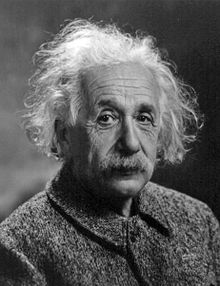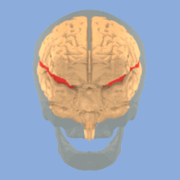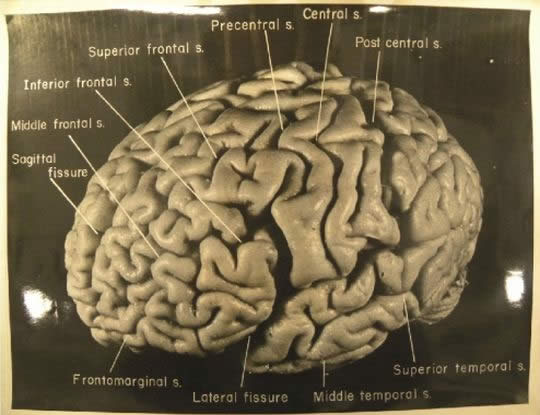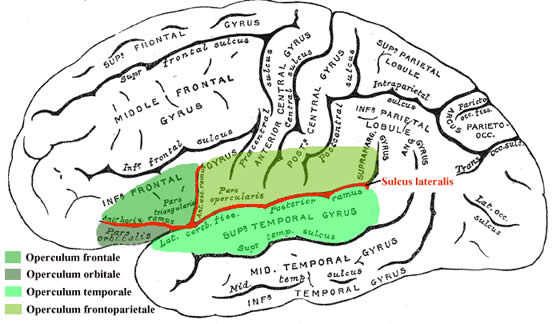I have done my share, it is time to go. I will do it elegantly.
 Einstein's brain was preserved after his death in 1955, but this fact was not revealed until 1986.
Einstein's brain was preserved after his death in 1955, but this fact was not revealed until 1986.
On 17 April 1955, Albert Einstein experienced internal bleeding caused by the ballooning and rupture of the largest abdominal artery, which had previously been reinforced surgically in 1948. He took the draft of a speech he was preparing for a television appearance commemorating the State of Israel's seventh anniversary with him to the hospital, but he did not live long enough to complete it.
 Lateral sulcus shown in red.
Lateral sulcus shown in red.
Einstein refused surgery, saying: "I want to go when I want. It is tasteless to prolong life artificially. I have done my share, it is time to go. I will do it elegantly." He died in Princeton Hospital early the next morning at the age of 76, having continued to work until near the end.
During the autopsy, the pathologist, Thomas Stoltz Harvey, removed Einstein's brain for preservation without the permission of his family, in the hope that the neuroscience of the future would be able to discover what made Einstein so intelligent.
 One of the original pathology photos of the Brain before being sectioned.
One of the original pathology photos of the Brain before being sectioned.
The autopsy was conducted at Princeton Hospital, on April 18 at 8:00 am. Einstein's brain weighed 1,230 grams -well within the normal human range- which immediately dispelled the concept that intelligence and brain size were directly related.
Harvey injected 11.4% formalin through the internal carotid arteries and afterwards suspended the intact brain in 10% formalin. Harvey photographed the brain from many angles. He then dissected it into about 240 blocks (each about 1 cm3) and encased the segments in a plastic-like material called collodion. Those sections were then sliced in microscopic slivers and mounted onto slides and stained. There were 12 sets of slides created with hundreds of slides in each set. Harvey retained two complete sets for his own research and distributed the rest to handpicked leading pathologists of the time.
In 1978, Einstein's brain was "rediscovered" in Dr. Harvey's possession. The brain sections had been preserved in alcohol in two large mason jars within a cider box for over 20 years.
Scientific studies have suggested that regions involved in speech and language are smaller, while regions involved with numerical and spatial processing are larger. Other studies have suggested an increased number of Glial cells in Einstein's brain, which provide support and protection for neurons in the brain and peripheral nervous system.
 Operculum (brain).
Operculum (brain).
The studies on Albert Einstein's Brain has not yeild a conlusive result so far. At this point, scientists don't know enough about how the brain works to know if the theories are accurate. For all visible purposes, Einstein's brain seems perfectly normal, with nothing that would immediately indicate any great genius. We may not know anything until there's another equivalent genius brain to study.